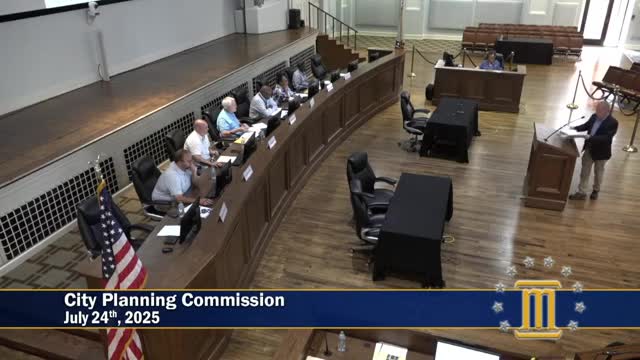Commissioners Approve Sidewalk Requirement Amendments for Development Plans
July 26, 2025 | Montgomery City, Montgomery County, Alabama
This article was created by AI summarizing key points discussed. AI makes mistakes, so for full details and context, please refer to the video of the full meeting. Please report any errors so we can fix them. Report an error »

During the Montgomery Planning Commission meeting on July 24, 2025, significant amendments to the subdivision regulations and zoning code were discussed, primarily focusing on the requirement for sidewalks in development plans. The proposed changes aim to resolve inconsistencies between existing regulations and clarify the necessity of including sidewalks in various types of development.
The first major point addressed was the lack of alignment between subdivision regulations and the zoning code. The commission emphasized that any development plan submitted must now explicitly include sidewalks, a requirement that was not clearly stated before. This amendment is intended to ensure that sidewalks are integrated into all new developments, including residential, commercial, and industrial projects.
Commission members raised questions regarding the implications of these requirements, particularly in rural areas where sidewalks may not traditionally be present. It was clarified that while sidewalks are mandated in urban and commercial zones, they may not be required in agricultural or rural settings. This distinction aims to balance development needs with the existing landscape.
Another critical discussion point was the maintenance of sidewalks once they are constructed. The commission noted that the city typically assumes responsibility for sidewalk maintenance, although this can vary based on specific agreements made during the development process. This clarification is crucial for ensuring that sidewalks remain safe and accessible over time.
Additionally, the meeting addressed a previous inconsistency in the regulations regarding sidewalk width. The amendments specify that sidewalks in residential areas must be a minimum of five feet wide, while those in business areas must be at least seven feet wide. This change rectifies earlier contradictory statements in the documents that incorrectly referred to maximum widths.
The commission unanimously approved the proposed amendments, signaling a commitment to enhancing pedestrian infrastructure in Montgomery. These changes are expected to improve safety and accessibility for residents, reflecting a growing recognition of the importance of walkable communities. As the city moves forward, the implementation of these regulations will be closely monitored to ensure compliance and effectiveness in promoting pedestrian-friendly development.
The first major point addressed was the lack of alignment between subdivision regulations and the zoning code. The commission emphasized that any development plan submitted must now explicitly include sidewalks, a requirement that was not clearly stated before. This amendment is intended to ensure that sidewalks are integrated into all new developments, including residential, commercial, and industrial projects.
Commission members raised questions regarding the implications of these requirements, particularly in rural areas where sidewalks may not traditionally be present. It was clarified that while sidewalks are mandated in urban and commercial zones, they may not be required in agricultural or rural settings. This distinction aims to balance development needs with the existing landscape.
Another critical discussion point was the maintenance of sidewalks once they are constructed. The commission noted that the city typically assumes responsibility for sidewalk maintenance, although this can vary based on specific agreements made during the development process. This clarification is crucial for ensuring that sidewalks remain safe and accessible over time.
Additionally, the meeting addressed a previous inconsistency in the regulations regarding sidewalk width. The amendments specify that sidewalks in residential areas must be a minimum of five feet wide, while those in business areas must be at least seven feet wide. This change rectifies earlier contradictory statements in the documents that incorrectly referred to maximum widths.
The commission unanimously approved the proposed amendments, signaling a commitment to enhancing pedestrian infrastructure in Montgomery. These changes are expected to improve safety and accessibility for residents, reflecting a growing recognition of the importance of walkable communities. As the city moves forward, the implementation of these regulations will be closely monitored to ensure compliance and effectiveness in promoting pedestrian-friendly development.
View full meeting
This article is based on a recent meeting—watch the full video and explore the complete transcript for deeper insights into the discussion.
View full meeting
